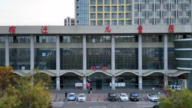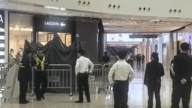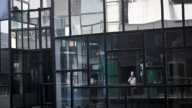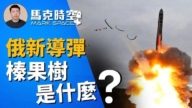【新唐人2011年11月17日讯】谷歌(Google Earth)最新版的卫星拍摄照片显示,在中国的戈壁滩上有多处大型、让人难以捉摸的建筑图案。由于显示的这些结构体图案,分布在中共太空项目发射基地酒泉和鼎新军事基地附近,引起外界各种揣测。
网路搜寻引擎“谷歌”公司的卫星地图﹙Google Maps﹚,最近发现中国西北部戈壁沙漠数个奇怪的结构体,这些结构体多数位于敦煌市西北方、疏勒河以北的新疆与甘肃交界处。
其中两个结构体,有如用一条条巨大白色粗线排出的巨大平面街道图,只是少了建筑物,范围约长1.6公里、宽0.9公里。
介于两个结构体中间的,是一处4×4方阵排列的金属物,就像巨大的标靶,将地图拉近可以看见形成格点的金属物有的是被摧毁的车辆。附近另有两座像机场跑道的结构,其中一处在地图上呈现明亮的青色。
接近新疆的地方,还有一块圆形区域,中间是飞机、周围有军用车辆和其他障碍物排成几圈同心圆。
结构体有的距离中共太空任务中心和发射场酒泉不到160公里﹔有的距离中共进行航空器测试的鼎新空军基地约643公里﹔距离罗布泊640公里外。
对于在这个区域,显示出的这些结构体到底是做什么用的?
早在2008年,Google Earth社区上就有人发现,新疆和甘肃的交界处,有多处神秘设施。
不过,英国《詹氏防卫周刊》国防专家雷普利,将这些结构体与美国位于内华达州的神秘“第51区”类似的方格体做比较,他表示,圆圈状物体的照片,非常像飞弹试射场,标靶和设备设置用来记录武器效果。美国第51区在内华达有许多这样的设施。
另外,英国《每日电讯报》11月11号报导,“谷歌地图”公布了2011年新拍摄的伊朗阿拉克和纳坦兹两座城市内核设施的卫星照片,与2010年拍摄的照片进行对比后发现,阿拉克核设施的部分建筑和工厂已经搬走,不过在它的中心位置又建起一座新的建筑物。
阿拉克是伊朗中央省的首府,这个地区建有重水反应堆工厂,伊朗声称这个设施用于生产核电。而纳坦兹位于伊朗中部,官方在这里设有铀浓缩工厂,并在这个号称伊朗最大的核设施周边构建了多层防空体系。
不久前,国际原子能机构(IAEA)在奥地利首都维也纳也发表了一份12页的报告,报告指出,一些信息表明,伊朗曾经进行过研制核弹头的工作。而且,有证据显示伊朗曾从事过“有关核武器的专项”活动,包括试制可能与核武器有关的构件及进行相关试验等,这些活动有的现在很有可能仍在进行。
对于中国戈壁巨大神秘图案,目前很难说明这些图案是如何形成的,究竟是在地形上绘色,还是在地质表面有钻探迹象?部分专家揣测,这些结构体,有的可能是飞弹打击测试场。
新唐人记者唐睿、郭敬综合报导。
Mysterious Structures in Gobi Desert
Google Earth’s latest satellite images show that there are
many large, elusive architectural designs in China’s Gobi Desert.
These structures are distributed near the Jiuquan launch
base of Chin’s space program, and Ding xin military base.
Google Maps recently discovered a number of strange
structures in China’s northwest Gobi Desert.
These structures are mostly located in the junction of Xinjiang
and Gansu Provinces, northwest of Dunhuang City, and north of Shule River.
Two structures look like huge white lines of plan map with street without surroundings.
Range in about 1.6 km long and 0.9 km wide.
Between the two structures, there is a 4 ×4 square array
of metal objects which is like a huge target.
At a closer look it can be seen that the formations
on the map are destroyed vehicles.
One of the other two nearby structures, which are
like runways, appears to be bright blue on the map.
In the place close to Xinjiang, there is a circular area.
There are some planes in the middle, surround by military
vehicles and other objects, arranged in a few concentric circles.
Another satellite image shows that there is a huge
desert-like circle resembling the Eight Diagrams.
Another photo shows rows of scattered wreckage
of what looks like destroyed cars.
Some of the structures are located in less than 160 km
from the Jiuquan launch center of China’s space projects.
Others are about 643 km from the Chinese Communist Party’s
(CCP) Dingxin Air Force Base, which is 640 km from Lop Nur.
What is the usage of the structures shown on these images?
Back in 2008, Google Earth found in the junction of Xinjiang
and Gansu provinces many mysterious facilities.
Britain’s “Jane’s Defense Weekly" (JDW) compared
these structures with those located in “Area 51," Nevada, US.
JDW said that the circle-shaped objects look like missile
testing range sites, used to record the effect of weapons.
There are many facilities like this in Area 51, Nevada, US.
In addition, on November 11, the Daily Telegraph reported
that Google Maps published new images of Iran’s nuclear facilities of Arak and Natanz.
Compared with images from 2010, part of the construction
of nuclear facilities and factories in Arak has been removed.
But in its central location a new building has been built.
Arak is the capital of Iran’s central province.
There is a heavy water reactor plant in the region.
Iran claimed that this facility was used
for the production of nuclear power.
Natanz is in central Iran and it has uranium enrichment plant.
These so-called nuclear facilities enclose a multi-layer of
Iran’s biggest defense system facilities.
Not long ago, the International Atomic Energy Agency (IAEA)
issued a 12-page report in Vienna, Austria.
It revealed information that Iran has carried out the work
of developing nuclear warheads.
Moreover, there is evidence that Iran has engaged
in “specialization on nuclear weapons" activities.
Including the trial of associated components of nuclear
weapons and testing. Some of these activities are likely still in progress.
For China’s great mystery pattern in Gobi, it is difficult
to explain how these patterns are formed.
Did they color the terrain, or drill in geological signs? Some
experts speculate these structures may be missile test sites.
NTD reporters Tang Rui and Guo Jing



























